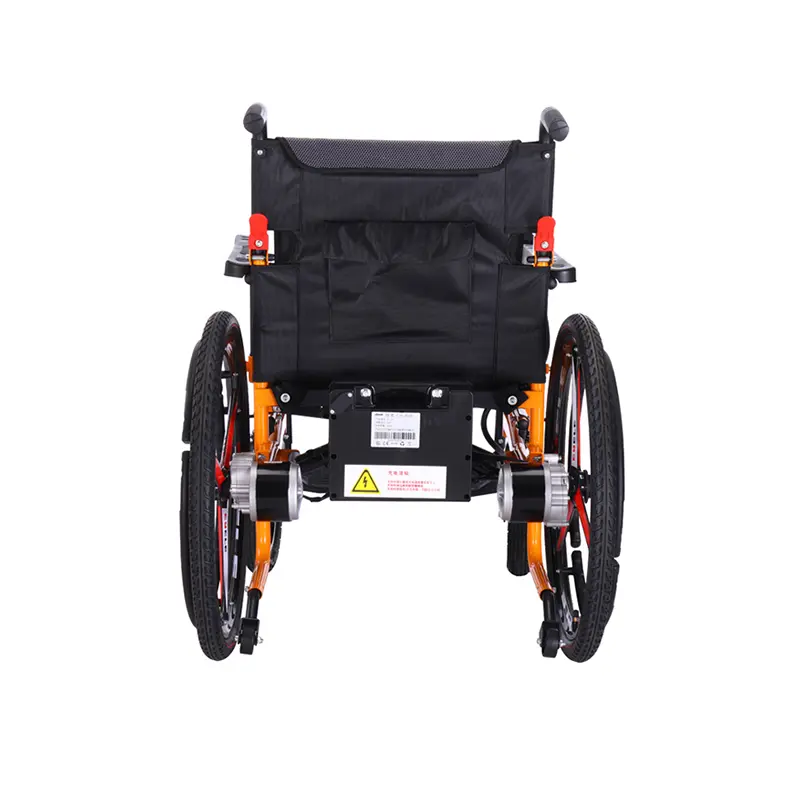What are the differences in safety standards between electric wheelchairs and electric scooters?
When choosing an electric wheelchair or electric scooter, it is crucial to understand the differences in safety standards between the two. These differences not only affect the performance and reliability of the product, but are also directly related to the safety and health of the user. The following is a detailed comparison of the safety standards of electric wheelchairs and electric scooters.
I. Safety standards for electric wheelchairs
(I) Medical device certification
Electric wheelchairs are classified as medical devices in China and must obtain a medical device registration certificate before they can be sold on the market. This means that electric wheelchairs need to meet higher safety and quality standards to ensure their safe use in medical and rehabilitation scenarios.
(II) International standards
Safety standards for electric wheelchairs generally follow the ISO 7176 series of international standards. For example:
ISO 7176-14:2008: Specifies the power and control system requirements and test methods for electric wheelchairs.
EN 12184:2014: Applicable to electric wheelchairs with a maximum speed not exceeding 15 km/h, and specifies its performance and safety requirements.
(III) Key performance requirements
The safety standards for electric wheelchairs cover many aspects, including but not limited to:
Maximum speed: The maximum speed of indoor electric wheelchairs is usually no more than 4.5 km/h, and the maximum speed of outdoor electric wheelchairs is no more than 6 km/h.
Braking performance: Electric wheelchairs must have a reliable braking system to ensure safe parking on different slopes.
Stability: Electric wheelchairs need to pass rigorous stability tests, including static and dynamic stability.
Electromagnetic compatibility: Electric wheelchairs need to meet electromagnetic compatibility standards to ensure safe use in medical environments.
II. Safety standards for electric scooters
(I) Lack of unified standards
Unlike electric wheelchairs, electric scooters do not yet have unified medical device or industrial standards in China. This has led to uneven quality and different safety standards for electric scooters on the market.
(II) Reference to international standards
Despite the lack of unified standards in China, some manufacturers may refer to international standards for production, such as:
EN 12184:2014: Although this standard is mainly for electric wheelchairs, some manufacturers may refer to its requirements to improve the safety of electric scooters.
(III) Key performance requirements
Safety standards for electric scooters usually include the following aspects:
Maximum speed: The maximum speed of electric scooters is generally no more than 15 km/h.
Braking performance: Electric scooters need to have a reliable braking system to ensure safe parking under different road conditions.
Stability: Electric scooters need to pass stability tests to ensure that they will not easily tip over during driving.
III. Differences in safety standards
(I) Medical devices and non-medical devices
As medical devices, electric wheelchairs have more stringent safety standards and need to meet the requirements of medical device registration certificates. However, due to the lack of unified standards, the safety and reliability of electric scooters may not be as good as electric wheelchairs.
(II) Application of international standards
Electric wheelchairs usually follow the international standard ISO 7176 series, which covers many key performance requirements of electric wheelchairs. In contrast, although electric scooters may refer to these standards, they lack mandatory requirements, which may not fully achieve the safety level of electric wheelchairs in actual applications.
(III) Differences in key performance requirements
Maximum speed: The maximum speed of electric wheelchairs is usually lower to ensure safety. The maximum speed of an electric scooter may be higher, which provides better travel efficiency but also increases safety risks.
Braking performance: The braking system of an electric wheelchair is rigorously tested to ensure safe parking on different slopes. Although the braking performance of an electric scooter is also important, due to the lack of uniform standards, the reliability and safety of its braking system may not be as good as that of an electric wheelchair.
Stability: The design of an electric wheelchair focuses on stability, especially when used indoors. Due to its larger size and higher speed, an electric scooter may not be as stable as an electric wheelchair.
IV. Safety recommendations in practical applications
(I) Choose the right equipment
Electric wheelchair: Suitable for elderly or disabled people with poor physical conditions, especially those who need to use it indoors or have high requirements for operational convenience.
Electric scooter: More suitable for elderly people with good physical conditions who mainly use it outdoors.
(II) Pay attention to safety standards
Electric wheelchair: When purchasing, be sure to check whether the product has obtained a medical device registration certificate.
Electric scooter: Due to the lack of uniform standards, it is recommended to choose products from well-known brands and pay attention to whether they refer to international standards.
(III) Precautions during use
Operation training: Whether it is an electric wheelchair or an electric scooter, users need to receive appropriate training to ensure safe operation.
Regular inspection: Regularly check the braking system, battery and other key components of the equipment to ensure that they are in good working condition.
V. Conclusion
There are significant differences in safety standards between electric wheelchairs and electric scooters. As a medical device, electric wheelchairs need to meet higher safety and quality standards, while electric scooters may not be as safe and reliable as electric wheelchairs due to the lack of unified standards. When choosing, you should choose the appropriate product based on the user’s specific needs and physical condition, and pay attention to its safety standards and performance requirements.
Post time: Feb-10-2025


